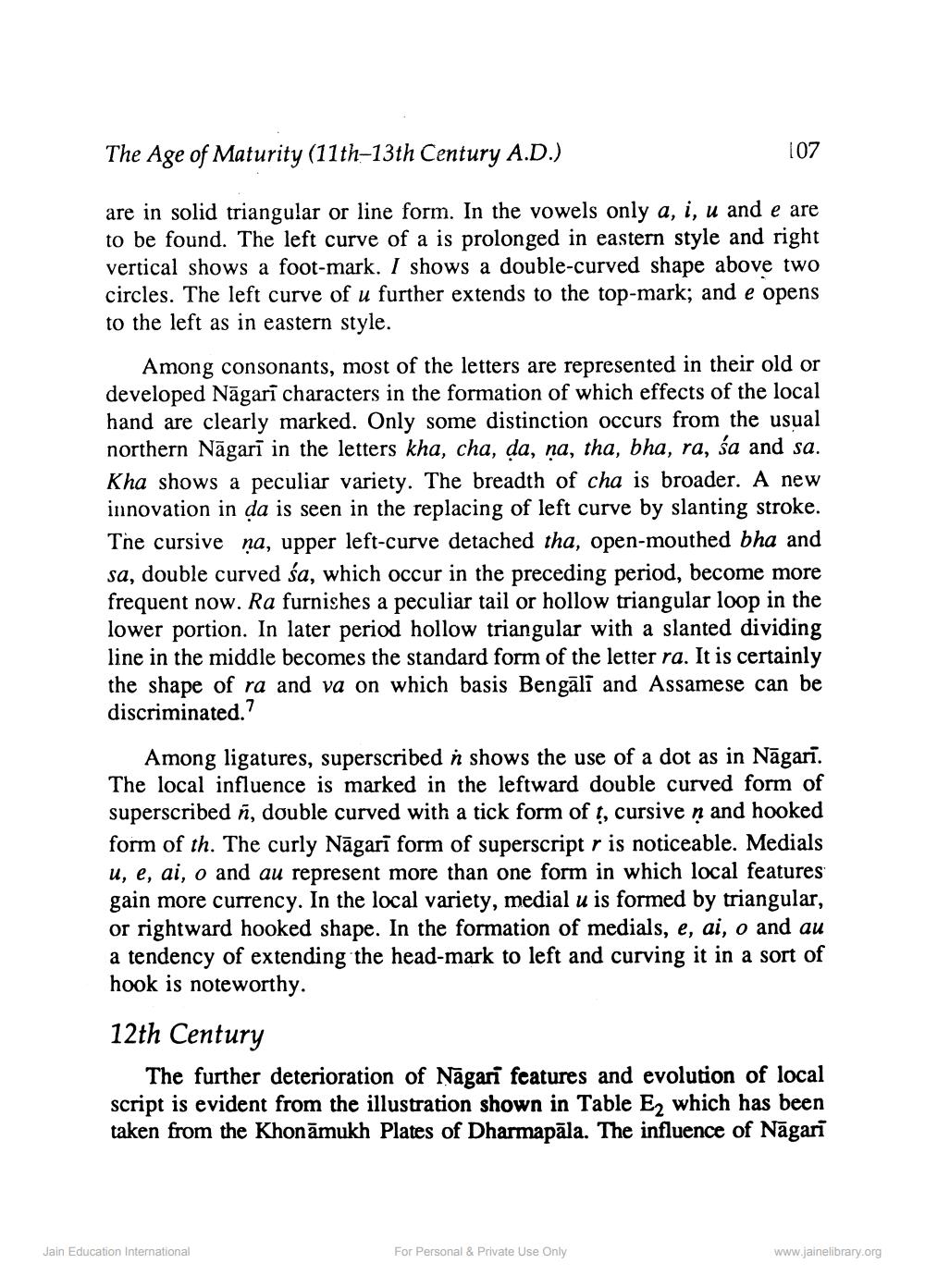________________
The Age of Maturity (11th-13th Century A.D.)
107
are in solid triangular or line form. In the vowels only a, i, u and e are to be found. The left curve of a is prolonged in eastern style and right vertical shows a foot-mark. I shows a double-curved shape above two circles. The left curve of u further extends to the top-mark; and e opens to the left as in eastern style.
Among consonants, most of the letters are represented in their old or developed Nāgari characters in the formation of which effects of the local hand are clearly marked. Only some distinction occurs from the usual northern Nāgari in the letters kha, cha, da, na, tha, bha, ra, śa and sa. Kha shows a peculiar variety. The breadth of cha is broader. A new innovation in da is seen in the replacing of left curve by slanting stroke. The cursive ņa, upper left-curve detached tha, open-mouthed bha and sa, double curved śa, which occur in the preceding period, become more frequent now. Ra furnishes a peculiar tail or hollow triangular loop in the lower portion. In later period hollow triangular with a slanted dividing line in the middle becomes the standard form of the letter ra. It is certainly the shape of ra and va on which basis Bengāli and Assamese can be discriminated."
Among ligatures, superscribed in shows the use of a dot as in Nāgari. The local influence is marked in the leftward double curved form of superscribed ñ, double curved with a tick form of t, cursive n and hooked form of th. The curly Nāgarī form of superscript r is noticeable. Medials u, e, ai, o and au represent more than one form in which local features gain more currency. In the local variety, medial u is formed by triangular, or rightward hooked shape. In the formation of medials, e, ai, o and au a tendency of extending the head-mark to left and curving it in a sort of hook is noteworthy.
12th Century
The further deterioration of Nāgari features and evolution of local script is evident from the illustration shown in Table E, which has been taken from the Khonāmukh Plates of Dharmapāla. The influence of Nāgari
Jain Education International
For Personal & Private Use Only
www.jainelibrary.org




